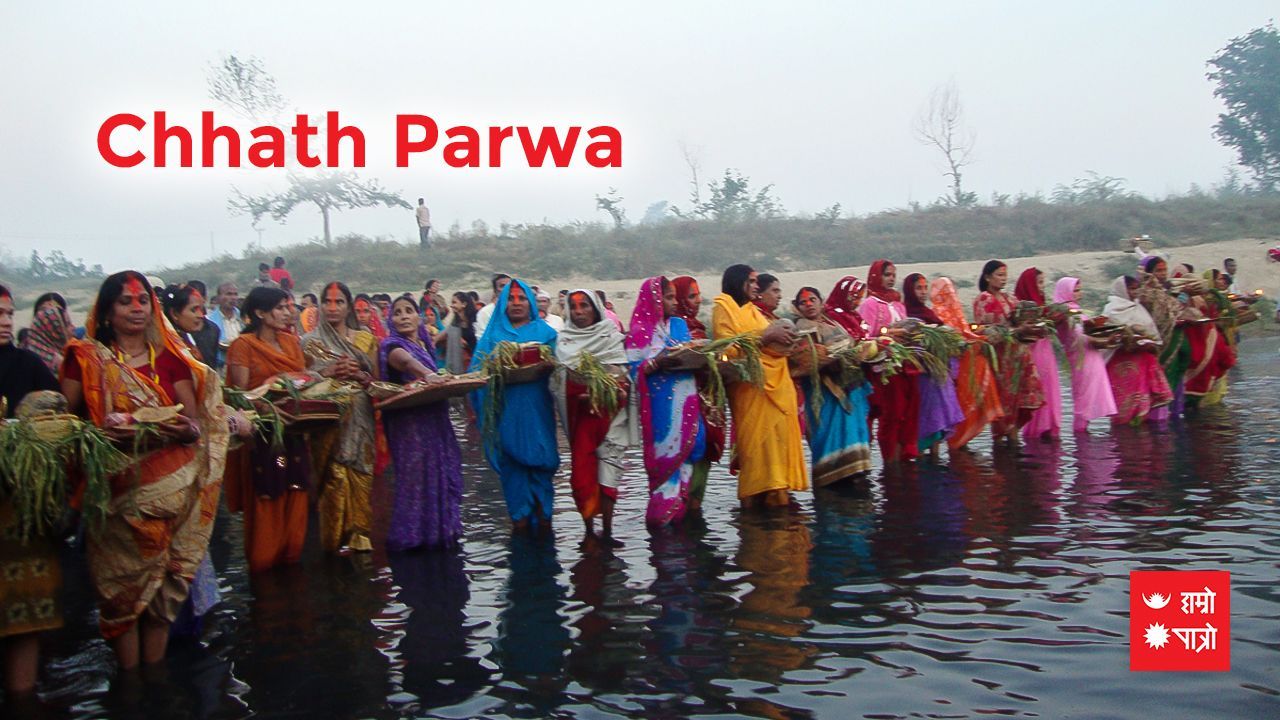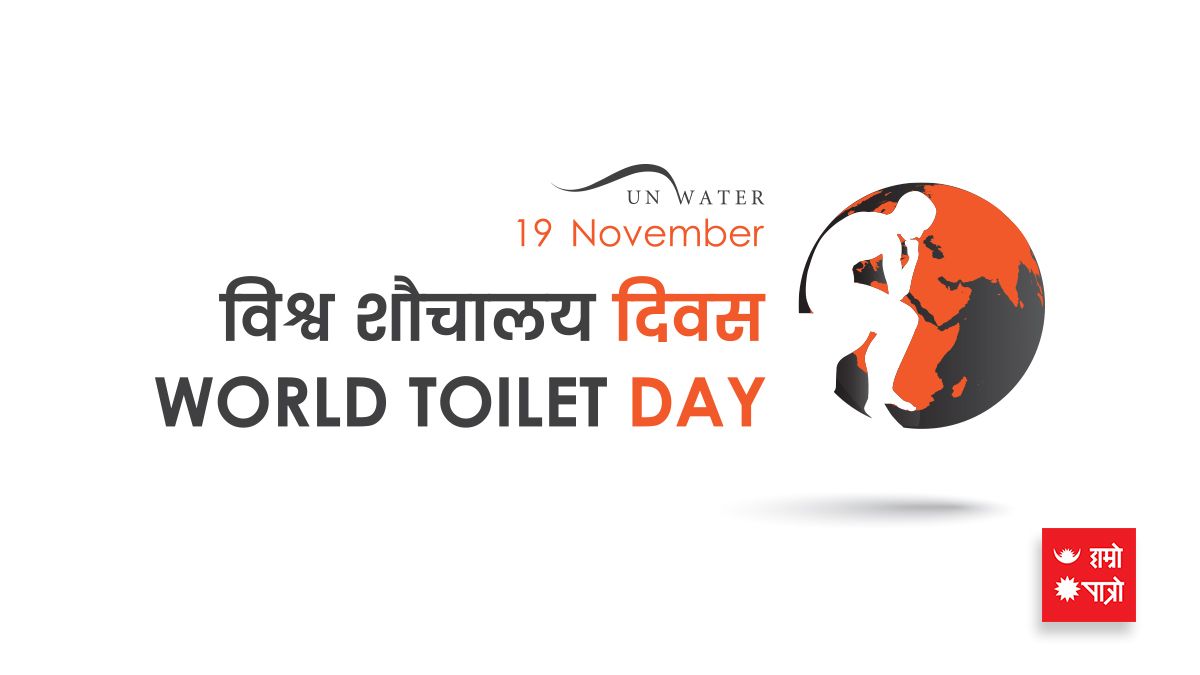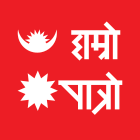Upcomming Events
-
29MangsirSafala Ekadashi Vrata tomorrow
-
1PaushDhanu Sankranti 2 days remaning
-
2PaushPradosh Vrata 3 days remaning
-
3PaushInternational Immigrants Day 4 days remaning
-
5PaushTol Lhosar 6 days remaning
-
6PaushWorld Meditation Day 7 days remaning
-
10PaushChristmas 11 days remaning
-
13PaushGorakhkali Puja 14 days remaning
-
15PaushTamu Lhosar/Kavi Siromani Lekhnath Jayanti/Putrada Ekadashi Vrata 16 days remaning
-
17PaushNew Year 2026/Pradosh Vrata/Topi Day/Poshak Day 18 days remaning
-
19PaushSri Swasthani Vrata Katha Prarambha/Maagh Snan/Poornima Vrata 20 days remaning
-
21PaushGuru Gobinda Singh Jayanti 22 days remaning
-
23PaushAraniko Smriti Day 24 days remaning
-
24PaushNepal Astrology Council Establishment Day 25 days remaning
-
27PaushPrithivi Jayanti/Rashtriya Ekata Diwas/Gorakhkali Puja 28 days remaning
-
29PaushNational Bhakka Day 30 days remaning
-
30PaushShattila Ekadashi 31 days remaning
-
1MaghMakar Sankranti/Ghiu chaku khane Din/Uttarayan Arambha 32 days remaning
-
2MaghNational Earthquake Safety Day/Pradosh Vrata 33 days remaning
-
5MaghSonam Lhochhar/Shree Ballav Jayanti 36 days remaning
-
8MaghTilkunda Chauthi 39 days remaning
-
9MaghBasanta Panchami vrata/Saraswati Pooja 40 days remaning
-
10MaghSkanda Sasti/Achala Saptami/International Day of Education 41 days remaning
-
11MaghGorakhkali Puja/World Leprosy Day 42 days remaning
-
12MaghInternational Custom Day 43 days remaning
-
13MaghDron Nawami 44 days remaning
-
15MaghBhima Ekadashi Vrata 46 days remaning
-
16MaghSahid Diwas/Pradosh Vrata 47 days remaning
-
18MaghShree Swasthani Brata Samapti/Poornima Wrata 49 days remaning
-
19MaghWorld Wetlands Day 50 days remaning
-
21MaghWorld Cancer Day 52 days remaning
-
25MaghRavisaptami Vrata 56 days remaning
-
26MaghGorakhkali Puja 57 days remaning
-
28MaghInternational Day of Women and Girls in Science/Safer Internet Day 59 days remaning
-
1FalgunKumbha Sankranti/Bijaya Ekadashi Vrata/World Radio Day 61 days remaning
-
2FalgunShani Pradosh Vrata/Valentine's Day 62 days remaning
-
3FalgunMaha-Shivaratri / Army Day/Silachahre Puja 63 days remaning
-
6FalgunGyalpo Lhosar 66 days remaning
-
7FalgunPrajatantra Diwas / Election Day 67 days remaning
-
8FalgunWorld Day of Social Justice 68 days remaning
Jyotish
-
Jyotish Narayan Prasad Bhandariज्योतिषका उप-प्राध्यापक (lecturer of A...
-
 Jyotish Mukunda Sharmaस्वाध्याय, सत्सङ्ग र सदाचारजस�...
Jyotish Mukunda Sharmaस्वाध्याय, सत्सङ्ग र सदाचारजस�...
-
Jyotish Vaman Sapkotaशिक्षा - व्याकरणाचार्य, पौरोही...
-
Jyotish Pandit Mukunda Nepalज्योतिष पण्डित मुकुन्द नेपाल�...
-
Jyotish Mohan Ghimireसम्पुर्णानन्द संस्कृत विश्वव...
-
Jyotish Damodar Poudelनेपाल संस्कृत विश्व बिद्यालय�...
-
Jyotish Amrit Paudelवाराणसीकै सम्पूर्णानन्द संस्...
-
Jyotish Purushottam Ghimireनेपाल संस्कृत विश्वविद्यालय, �...
-
Jyotish Smarika Acharyaबाल्मीकि बिद्यापिठ बाट ज्योत�...
-
Jyotish Krishna Prasad Bhandariउपप्राध्यापक (Asst. professor of Sanskrit) नेपा�...
-
 Jyotish Dharmendra Krishna Paudelशास्त्री धर्मेन्द्र कृष्ण पौ�...
Jyotish Dharmendra Krishna Paudelशास्त्री धर्मेन्द्र कृष्ण पौ�...
-
Jyotish Dipendra Khatiwadaसम्पुर्णानन्द संस्कृत बिश्वब...
-
Jyotish Narayan Prasad Gautamगुरुकुल शिक्षा प्रणालीबाट ज्�...
-
 Jyotish Kuresh Pandey११ वर्षको अनुभवसहित विभिन्न ध�...
Jyotish Kuresh Pandey११ वर्षको अनुभवसहित विभिन्न ध�...
-
Jyotish Deepak Prasad Kafleसम्पूर्णानन्द संस्कृत विश्वव...
-
Jyotish Damodar Kaushikज्योतिष र व्याकरण विषयमा आचार�...
-
Jyotish Ghanashyam Pokharelनेपाल संस्कृत विश्वविद्यालयब...
-
Jyotish Khageshwor Subediगुरुकुल पद्दति बाट ज्योतिषीय �...
-
Acharya Choodamani Pathakसम्पूर्णानन्दसंस्कृत विश्वव�...
-
Jyotish Dr. Janak Bhattaविगत ३५ वर्षदेखि कुण्डली निर्�...
-
Jyotish Khagendra Subediसम्पूर्णानंद संस्कृत विश्ववि...
Hororscope
Chhath Parwa Barta | World Toilet Day

Chaath Parwa
After the lights and smiles of Dashain and Tihar, the lights of Chaath festival knock on the door of Nepalis. Best wishes for Chaath festival this year!
All the festivals and powers of the Vedic Sanatan Dharma revolve around nature and the earth, the experimental significance of which is extremely scientific. The Chaath festival is a ritual of the Sun God.
Role of the Lord Sun in the Sanatan philosophy
The role of the sun on this earth is super significant, including the rising sun in the morning, the light that penetrates through the corners of the windows, the sun that nurtures the plants, the sun that creates clouds, the sun that gives warmth, and the interdependent relationship between humans and the sun.
It is believed that the name of this festival is Chaath as it is celebrated on the 6th day (Sasthi) of the lunar calendar. The Chaath festival, which is celebrated in the Terai region, is now becoming popular in the mountains, hills, and the Terai. Symbol of harmony and brotherhood, this festival is celebrated with great joy and rejoicing.
It is customary to bring the offerings given by the neighbors such as banana, coconuts, sugarcane, and other fruits to the Chaath fasting person's ( Vratalu's) house. It is customary to take the fruits brought home in the morning on the last day of Chaath after seeing the rising sun. Devotees have taken vows for the fulfillment of various aspirations for Chaath and accordingly, the practice of offering prasad on Chhath has continued.
Chaath is a purely religious festival and there is no tradition of slaughtering animals or sacrificing animals.
Four Days of Chaath festival explained:
The first day of this four-day festival is called Arba or Nahai Khay, the second day is called "Kharna", the third day is called "Sanjhiya Arghya" Chhath because the third day of this festival starting from Kartik Shukla Chaturthi is Chaath i.e. Shashti and the last day is called "Vihaniya Arghya" Paran.
On the day of Araba, it is customary for the youth of the village to celebrate Chaath by cleaning the banks of rivers or lakes or ponds, scraping the grass, and purifying the water. While cleaning the pond in this way in the Terai, a boat made of banana pillars is made that does not drown in water.
On the third day, "Sanjhiya Ghat", in the evening, the Vratals offer milk Argha to the sun being half-submerged in the water. And on the morning and evening of the fourth day, before the sun rises, it is customary to reach Chaath Ghat and end the fast by offering argha to the rising sun.
Mahabharata and the citation of Chaath festival
In the Mahabharata, it is said that the immense wealth and power attained by Karna was all due to the effect of the Chaath fast, while it is mentioned that Draupadi also took the Chaath fast.
A unique example of nature and civilization. Happy Chaath Festival to all! All of us human beings are forever blessed by the radiant presence of the sun and the grace of the sun god towards us.
Good luck to everyone! May there be life in the creature and may religion triumph! May the chaath mother bless everyone!
World Toilet Day
Global statistics of toilet usage
Worldwide 4.2 billion people live without safely managed sanitation and around 673 million people still practice open defecation.
Is toilet ignorable?
As an indispensable thing to human life, Toilet has several names like restroom, latrine, and many others. Many of us have experienced and endured the threat of being locked in a toilet if a child does not read well. It is sometimes argued that the toilet, which is indispensable for life and synonymous with cleanliness, is viewed with so much hatred and disgust.
Sadly, most cities or villages in Nepal do not have proper toilet facilities. Many of us have a habit of defecating and urinating in the toilet of the house when we have to go out and holding it till we return so that we don't get in the way.
We have found that most of the toilets from the hospital to the cinema are smelly. Now, gradually, public toilets are getting cleaner in Nepal but still, a lot is to be done.
The world celebrates World Toilet Day on November 19 every year, highlighting the importance of this toilet and its importance.
Theme for 2023
"Accelerating change"
World Toilet Day 2023, on 19 November, will focus on the theme of 'Accelerating Change'. World Toilet Day is an annual United Nations Observance promoted through a worldwide public campaign that encourages action to tackle the global sanitation crisis.
Even though the daily use of toilets is gradually increasing in Nepal, why are public toilets not a priority in the urban sprawl model in the growing urbanizations, and why there is no proper sanitation and management?
But even in the developed cities of Nepal, there is no easy public toilet system, which makes it very difficult. In some places, the cost of public toilets is so high that it seems that we are the ones who pay the highest amount of money for the toilet, in the world.
The main thing is not to let the next generation develop the feeling that the toilet is a dirty place, it is important to spread the information and messages to every class, gender, caste, community that there is no alternative to cleaning the toilet and making it infection-free. Remember that proper use of clean toilets is also an integral part of a civilized society.
-Suyog Dhakal
Upcomming Events
-
29MangsirSafala Ekadashi Vrata tomorrow
-
1PaushDhanu Sankranti 2 days remaning
-
2PaushPradosh Vrata 3 days remaning
-
3PaushInternational Immigrants Day 4 days remaning
-
5PaushTol Lhosar 6 days remaning
-
6PaushWorld Meditation Day 7 days remaning
-
10PaushChristmas 11 days remaning
-
13PaushGorakhkali Puja 14 days remaning
-
15PaushTamu Lhosar/Kavi Siromani Lekhnath Jayanti/Putrada Ekadashi Vrata 16 days remaning
-
17PaushNew Year 2026/Pradosh Vrata/Topi Day/Poshak Day 18 days remaning
-
19PaushSri Swasthani Vrata Katha Prarambha/Maagh Snan/Poornima Vrata 20 days remaning
-
21PaushGuru Gobinda Singh Jayanti 22 days remaning
-
23PaushAraniko Smriti Day 24 days remaning
-
24PaushNepal Astrology Council Establishment Day 25 days remaning
-
27PaushPrithivi Jayanti/Rashtriya Ekata Diwas/Gorakhkali Puja 28 days remaning
-
29PaushNational Bhakka Day 30 days remaning
-
30PaushShattila Ekadashi 31 days remaning
-
1MaghMakar Sankranti/Ghiu chaku khane Din/Uttarayan Arambha 32 days remaning
-
2MaghNational Earthquake Safety Day/Pradosh Vrata 33 days remaning
-
5MaghSonam Lhochhar/Shree Ballav Jayanti 36 days remaning
-
8MaghTilkunda Chauthi 39 days remaning
-
9MaghBasanta Panchami vrata/Saraswati Pooja 40 days remaning
-
10MaghSkanda Sasti/Achala Saptami/International Day of Education 41 days remaning
-
11MaghGorakhkali Puja/World Leprosy Day 42 days remaning
-
12MaghInternational Custom Day 43 days remaning
-
13MaghDron Nawami 44 days remaning
-
15MaghBhima Ekadashi Vrata 46 days remaning
-
16MaghSahid Diwas/Pradosh Vrata 47 days remaning
-
18MaghShree Swasthani Brata Samapti/Poornima Wrata 49 days remaning
-
19MaghWorld Wetlands Day 50 days remaning
-
21MaghWorld Cancer Day 52 days remaning
-
25MaghRavisaptami Vrata 56 days remaning
-
26MaghGorakhkali Puja 57 days remaning
-
28MaghInternational Day of Women and Girls in Science/Safer Internet Day 59 days remaning
-
1FalgunKumbha Sankranti/Bijaya Ekadashi Vrata/World Radio Day 61 days remaning
-
2FalgunShani Pradosh Vrata/Valentine's Day 62 days remaning
-
3FalgunMaha-Shivaratri / Army Day/Silachahre Puja 63 days remaning
-
6FalgunGyalpo Lhosar 66 days remaning
-
7FalgunPrajatantra Diwas / Election Day 67 days remaning
-
8FalgunWorld Day of Social Justice 68 days remaning
Jyotish
-
Jyotish Narayan Prasad Bhandariज्योतिषका उप-प्राध्यापक (lecturer of A...
-
 Jyotish Mukunda Sharmaस्वाध्याय, सत्सङ्ग र सदाचारजस�...
Jyotish Mukunda Sharmaस्वाध्याय, सत्सङ्ग र सदाचारजस�...
-
Jyotish Vaman Sapkotaशिक्षा - व्याकरणाचार्य, पौरोही...
-
Jyotish Pandit Mukunda Nepalज्योतिष पण्डित मुकुन्द नेपाल�...
-
Jyotish Mohan Ghimireसम्पुर्णानन्द संस्कृत विश्वव...
-
Jyotish Damodar Poudelनेपाल संस्कृत विश्व बिद्यालय�...
-
Jyotish Amrit Paudelवाराणसीकै सम्पूर्णानन्द संस्...
-
Jyotish Purushottam Ghimireनेपाल संस्कृत विश्वविद्यालय, �...
-
Jyotish Smarika Acharyaबाल्मीकि बिद्यापिठ बाट ज्योत�...
-
Jyotish Krishna Prasad Bhandariउपप्राध्यापक (Asst. professor of Sanskrit) नेपा�...
-
 Jyotish Dharmendra Krishna Paudelशास्त्री धर्मेन्द्र कृष्ण पौ�...
Jyotish Dharmendra Krishna Paudelशास्त्री धर्मेन्द्र कृष्ण पौ�...
-
Jyotish Dipendra Khatiwadaसम्पुर्णानन्द संस्कृत बिश्वब...
-
Jyotish Narayan Prasad Gautamगुरुकुल शिक्षा प्रणालीबाट ज्�...
-
 Jyotish Kuresh Pandey११ वर्षको अनुभवसहित विभिन्न ध�...
Jyotish Kuresh Pandey११ वर्षको अनुभवसहित विभिन्न ध�...
-
Jyotish Deepak Prasad Kafleसम्पूर्णानन्द संस्कृत विश्वव...
-
Jyotish Damodar Kaushikज्योतिष र व्याकरण विषयमा आचार�...
-
Jyotish Ghanashyam Pokharelनेपाल संस्कृत विश्वविद्यालयब...
-
Jyotish Khageshwor Subediगुरुकुल पद्दति बाट ज्योतिषीय �...
-
Acharya Choodamani Pathakसम्पूर्णानन्दसंस्कृत विश्वव�...
-
Jyotish Dr. Janak Bhattaविगत ३५ वर्षदेखि कुण्डली निर्�...
-
Jyotish Khagendra Subediसम्पूर्णानंद संस्कृत विश्ववि...
Hororscope
Liked by:




















 Mesh
Mesh Brish
Brish Mithun
Mithun Karkat
Karkat  Singha
Singha  Kanya
Kanya Tula
Tula Brischik
Brischik Dhanu
Dhanu  Makar
Makar  Kumbha
Kumbha Meen
Meen